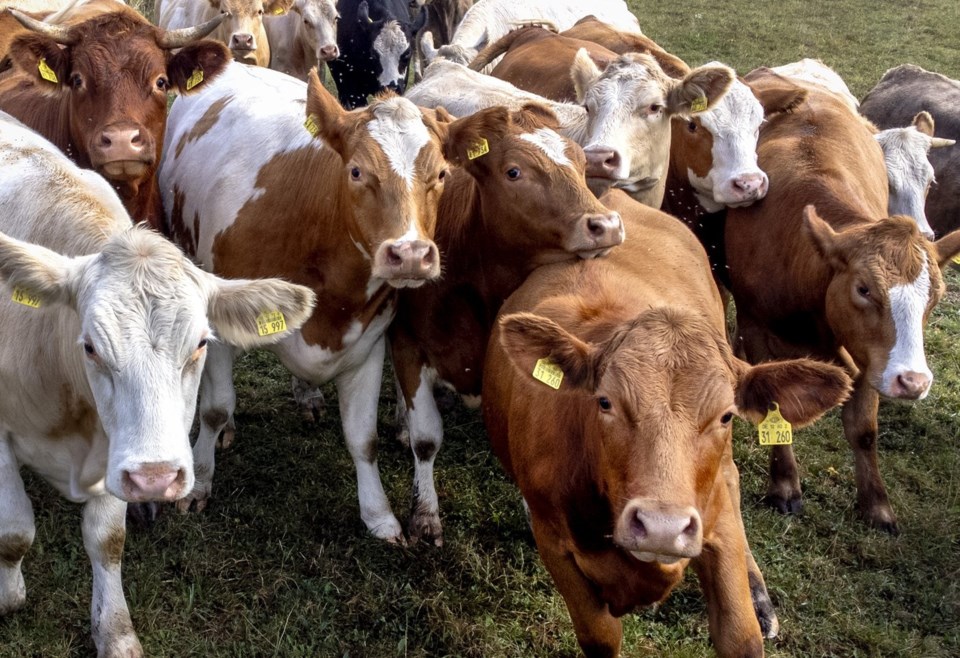The amount and proportion of the powerful heat-trapping gas methane that humans spew into the atmosphere is rising, helping to turbocharge , a new study finds.
Tuesday’s study finds that in 2020, the last year complete data is available, the world put 670 million tons (608 million metric tons) of methane in the air, up nearly 12% from 2000. An even more significant finding in the study in Environmental Research Letters was the source of those emissions: those from humans jumped almost 18% in two decades, while natural emissions, mostly from wetlands, inched up just 2% in the same time.
are now 2.6 times higher than in pre-industrial times, the study said. Methane levels in the air had plateaued for a while in the early 2000s, but now are soaring. Humans cause methane emissions by burning fossil fuels, engaging in large-scale agriculture and filling up landfills.
“Methane is a climate menace that the world is ignoring,” study lead author Rob Jackson, head of the , which is a group of scientists who monitor greenhouse gas emissions yearly. “Methane has risen far more and much faster than carbon dioxide."
Carbon dioxide is still the biggest threat, said Jackson, a Stanford University climate scientist. Humans, mostly through the burning of coal, oil and natural gas, put 60 times more carbon dioxide in the air than methane and it lasts thousands of years.
Because methane leave the atmosphere in about a decade, it's a powerful “lever” that humans can use to fight climate change, Jackson said. That's because cutting it could yield relatively quick benefits.
In 2000, 60% of the methane spewed into the air came from direct human activity. Now it's 65%, the study found.
“It's a very worrying paper, but actually not a big surprise unfortunately,” said climate scientist Bill Hare, CEO of Climate Analytics, who wasn't part of the research. He said for the world to keep warming to an agreed-upon (2.7 Fahrenheit) since pre-industrial times, the world needs to cut carbon dioxide emissions nearly in half and methane by more than one-third.
But Jackson said the current trend with methane emissions has the world on target for warming of 3 degrees Celsius (5.4 degrees Fahrenheit), twice the goal of the .
Jackson's study mostly focused on where the methane is coming from, both by location and source.
Geographically, everywhere but Europe is increasing in human-caused methane emissions, with large jumps in Asia, especially China and India, Jackson said.
In the last 20 years, methane emissions from coal mining, oil and gas have jumped 33%, while landfill and waste increased 20% and agriculture emissions rose 14%, according to the study. The biggest single human-connected source of Jackson said.
Cornell University climate scientist Robert Howarth faulted the study for not sufficiently emphasizing methane emissions from the boom in shale gas drilling, known as fracking. He said that boom began in 2005 and coincided with a sharp rise in methane emissions, including a spike of about 13 million tons (11.7 million metric tons) in the since then.
Jackson said the rise in natural methane from tropical wetlands was triggered by warmer temperatures that caused microbes to spew more gas. He called it disturbing because “we don't have any way of reducing” those emissions.
In 2021, , but it's not working yet, Jackson said.
Though Jackson's data runs only through 2020, he said global monitoring of methane levels in the air show that “we know that concentrations in the last four or five years rose faster than at any time in the instrument record. So that alone tells us that the global methane pledge is not having a substantive effect on methane emissions and concentrations,” he said.
University of Victoria climate scientist Andrew Weaver, who wasn't part of the research, said, “we have a lot more work to do if we want to avoid the most dire consequences of global warming.”
___
Read more of AP’s climate coverage at
___
Follow Seth Borenstein on X at
______
The Associated Press’ climate and environmental coverage receives financial support from multiple private foundations. AP is solely responsible for all content. Find AP’s for working with philanthropies, a list of supporters and funded coverage areas at .
Seth Borenstein, The Associated Press



